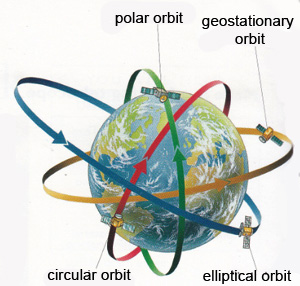 The movement of a satellite around the Earth is fixed in either a circular or an elliptical orbit. The satellite can be positioned in a polar orbit, circling the Earth from pole to pole, or placed in an equatorial orbit around the Equator, or in a low Earth orbit, or it may hang in one place, in geostationary orbit. In the first project you can see for yourself how geostationary orbits work.
The movement of a satellite around the Earth is fixed in either a circular or an elliptical orbit. The satellite can be positioned in a polar orbit, circling the Earth from pole to pole, or placed in an equatorial orbit around the Equator, or in a low Earth orbit, or it may hang in one place, in geostationary orbit. In the first project you can see for yourself how geostationary orbits work.
The type of orbit is chosen according to the job the satellite is there to do. Most communications and weather satellites are placed in geostationary orbit 22,000 miles above the Equator. A satellite in this orbit keeps pace with the turning Earth, and appears to hang motionless over the same spot on the ground. Once a radio dish on the ground is aimed at the satellite, the dish need not be moved again. Other satellites have to be tracked using movable radio dishes that follow the satellite as it crosses the sky. The second project demonstrates the way in which satellites relay signals from one place to another.
GEOSTATIONARY ORBIT
YOU WILL NEED
About 15 strips of blue card, about 30 strips of red card, rope, a friend.
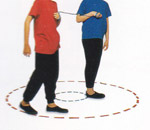
STEP 1
Use the card strips to mark a blue circle, with a larger red circle around it on the ground. Hold one end of the rope, and ask a friend to hold the other end.
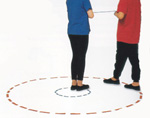 STEP 2
STEP 2
Walk around the inner circle, while your friend walks around the outer circle. The blue inner circle represents the Earth, and the outer circle represents the orbit of a satellite around the Earth. If your orbiting friend keeps pace with you as you walk, your human satellite is in a geostationary orbit.
MAKE A SATELLITE RELAY
YOU WILL NEED
Scissors, blue paper, tin can, tape, 1 yardstick, thin card, flat mirror, nonhardening modeling material, flashlight.
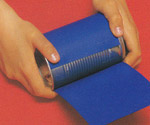
STEP 1
Using the scissors, cut out a rectangle of blue paper just big enough to wrap around the tin can. Tape it in place. The tin can will act as a ground-based radio receiver.
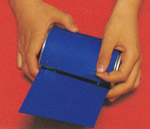 STEP 2
STEP 2
Measure out a 4 x 4in piece of card with the ruler. Cut it out and stick it to one side of the tin can. This will act as an antenna on your tin-can receiver.
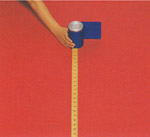 STEP 3
STEP 3
Place the tin can on the floor. Take the yardstick and lay it on the floor directly in front of the tin can. Place it on the opposite side to the antenna, as shown.
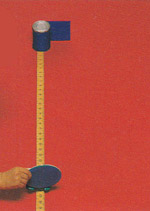 STEP 4
STEP 4
Place the mirror on the ruler about 2 ½ft from the tin can. The mirror will act like a satellite in geostationary orbit relaying signals. Fix in place with modeling material.
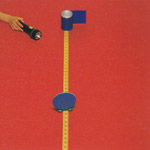 STEP 5
STEP 5
Darken the room. Place the flashlight beside the can, as shown. The flashlight will send out light beams in the same way that a ground-based transmitter sends out radio waves.
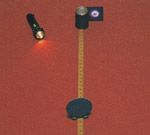 STEP 6
STEP 6
Switch on the flashlight. Move the mirror along the yardstick. Keep moving it, until the light beams are reflected off the mirror satellite and onto the antenna of the tin can.
Back to School Projects Main

 The movement of a satellite around the Earth is fixed in either a circular or an elliptical orbit. The satellite can be positioned in a polar orbit, circling the Earth from pole to pole, or placed in an equatorial orbit around the Equator, or in a low Earth orbit, or it may hang in one place, in geostationary orbit. In the first project you can see for yourself how geostationary orbits work.
The movement of a satellite around the Earth is fixed in either a circular or an elliptical orbit. The satellite can be positioned in a polar orbit, circling the Earth from pole to pole, or placed in an equatorial orbit around the Equator, or in a low Earth orbit, or it may hang in one place, in geostationary orbit. In the first project you can see for yourself how geostationary orbits work.